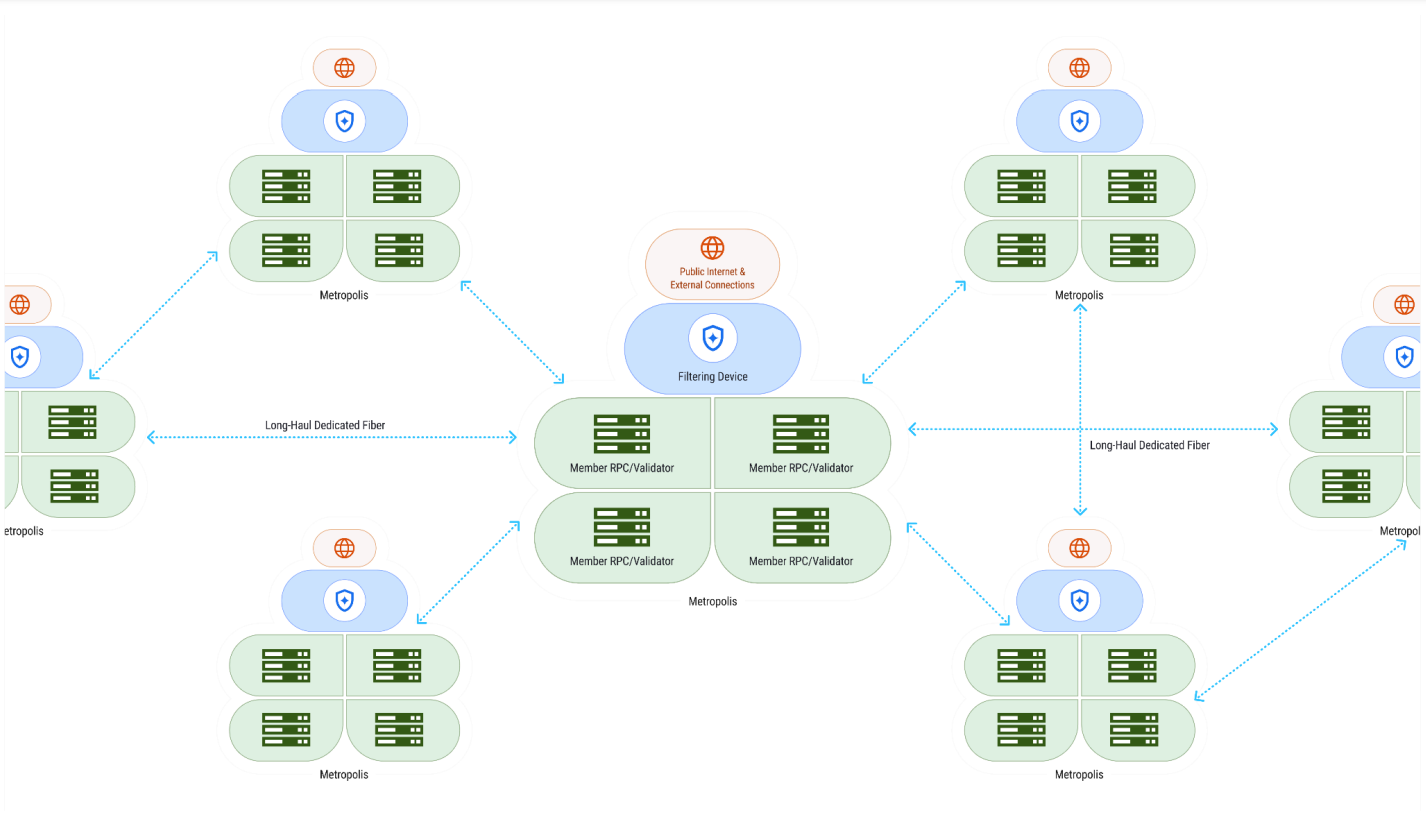Modern distributed systems demand more than just computing power — they need reliable, high-speed communication. Whether it’s validators syncing blocks, LLMs sharing model states, or game servers handling global players, everything depends on how efficiently data moves.
I'm Heorhii, and in this article, I want to walk you through the real-world use cases for the DoubleZero Protocol — a permissionless network layer designed to increase bandwidth, reduce latency, and deliver infrastructure that finally matches the performance needs of today’s systems.

Let’s dive into where DoubleZero fits in.
1. Layer 1 Blockchains. Layer 1s are under constant pressure to scale. But even with faster consensus algorithms and optimized clients, they often hit the same wall: communication between validators is too slow and unreliable.
DoubleZero changes that by:
-
Filtering inbound spam before it hits validators.
-
Routing messages (blocks, votes) over low-latency, high-bandwidth links.
-
Enabling multicast for rapid propagation of blocks and shreds.
The result? Faster finality, lower hardware costs per validator, and improved decentralization.
2. RPC Nodes. RPC nodes are the public face of a blockchain. They’re constantly handling incoming transactions and outbound data to users, wallets, and dApps.
Problems:
-
Vulnerable to DDoS attacks.
-
Compete for bandwidth during high-traffic events (like mints or airdrops).
-
Struggle to keep state synced in real time.
DoubleZero solves this by:
-
Offloading spam filtering at the edge.
-
Providing reliable, fast routes to the validator set.
-
Ensuring near real-time access to state changes.
3. MEV Systems. Latency is everything in MEV. A few milliseconds can be the difference between a winning bundle and a missed opportunity.
DoubleZero improves MEV infrastructure by:
-
Delivering real-time state updates faster.
-
Allowing searchers to run more simulations with better data.
-
Ensuring quicker delivery of bundles to block leaders.
It’s an edge in a space where timing defines success.
4. Layer 2 Blockchains. Layer 2s aim for speed and scalability — but rely on effective communication with sequencers, DA layers, and Layer 1s.
Use cases include:
-
Fast posting and retrieval from L1s.
-
Coordination between multiple sequencers.
-
High-bandwidth communication with data availability providers.
DoubleZero makes this communication seamless, improving both decentralization and responsiveness.
5. Blockchain Extensions: Indexers, ZK Proofs, State Sync. Indexers, state sync engines, and proof generators have heavy network needs:
-
They require fast, constant access to the latest chain state.
-
Syncing new validators is painful due to high data volume.
-
ZK systems often depend on specialized hardware that needs reliable data flow.
DoubleZero helps by:
-
Accelerating state propagation across the network.
-
Reducing validator onboarding time.
-
Supporting efficient data delivery to hardware-specific compute clusters.
6. Content Delivery Networks (CDNs). CDNs rely on efficient routing and caching to serve content fast. But building your own backbone network is expensive and inflexible.
With DoubleZero:
-
New CDNs can bootstrap global delivery without major infra investment.
-
Existing CDNs can fill coverage gaps or handle peak loads without long-term contracts.
-
Multicast support improves delivery of shared assets or live updates.
7. Online Gaming. Games live and die by network performance. Lag ruins gameplay, especially in real-time multiplayer environments.
DoubleZero supports:
-
Lower latency between game clients and servers.
-
More stable connections across regions.
-
Flexible bandwidth usage during traffic spikes (tournaments, events).
Both peer-to-peer games and centralized-server games can benefit.
8. Distributed LLM Training. Training large language models often requires moving huge model snapshots between distributed data centers or machines.
Challenges:
-
Public internet is too slow and congested.
-
Co-locating all compute is rarely practical.
DoubleZero offers:
-
High-throughput, low-latency model sync.
-
Reduced idle time across GPU fleets.
-
Better performance even in multi-provider setups.
9. Enterprise Network Extensions. Companies with high internal bandwidth needs usually lease private fiber — but that model is expensive, rigid, and hard to scale.
DoubleZero changes the game by:
-
Letting enterprises tap into on-demand bandwidth.
-
Acting as a buffer for bursty workloads or new regions.
-
Reducing dependence on any single provider.
It’s private networking without the lock-in.
More info you can find in DoubleZero Whitepaper:
Conclusion. DoubleZero isn’t just a new protocol — it’s a new foundation for how distributed systems move data. Its flexible, permissionless, and performance-driven design unlocks improvements across blockchains, AI, gaming, and enterprise networks.
If you’re building anything that depends on low-latency communication — or tired of the limitations of public internet infrastructure — DoubleZero might be the upgrade you didn’t know you needed.
— Heorhii (Colliseum)
RESOURCES:
SOCIAL MEDIA:
